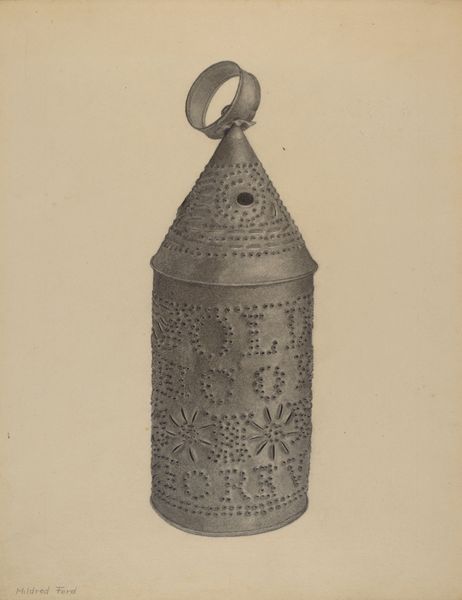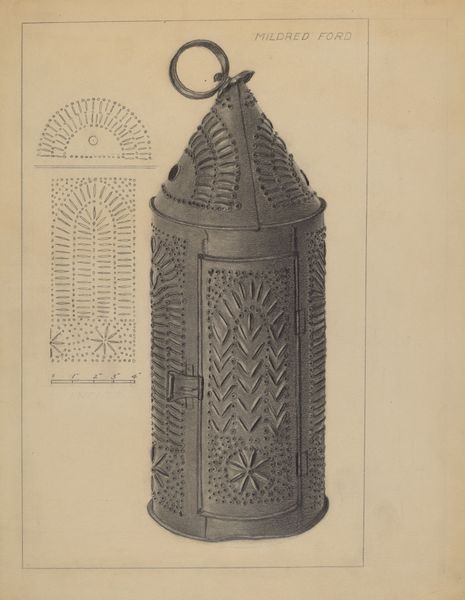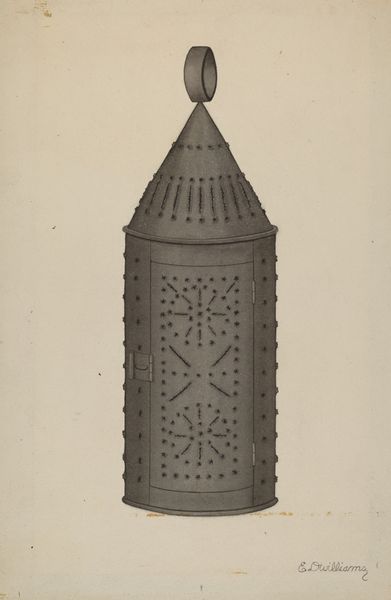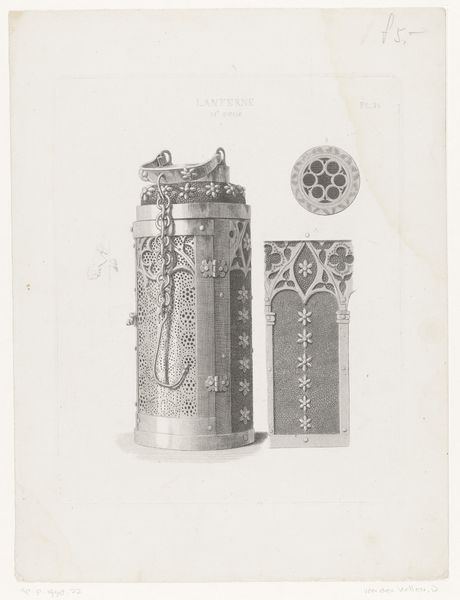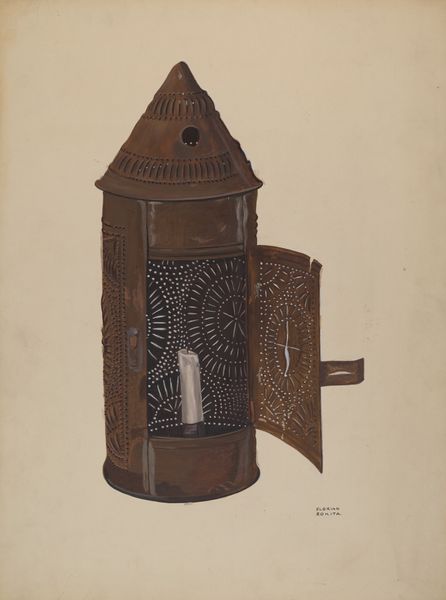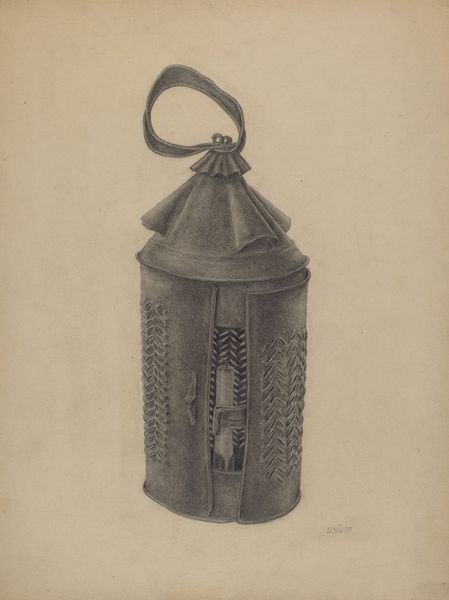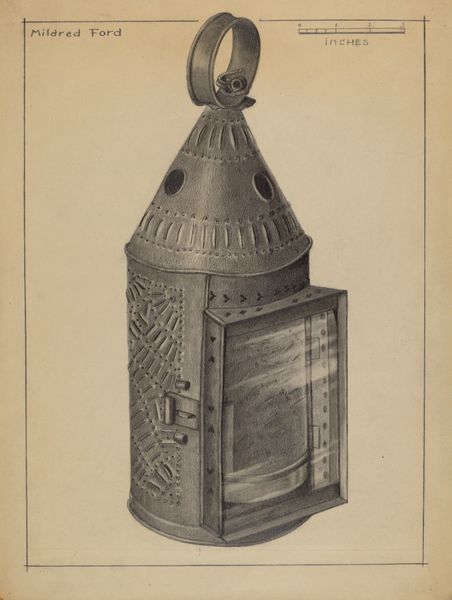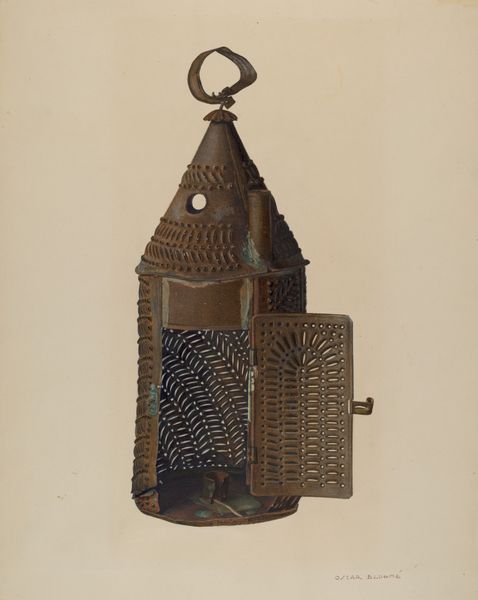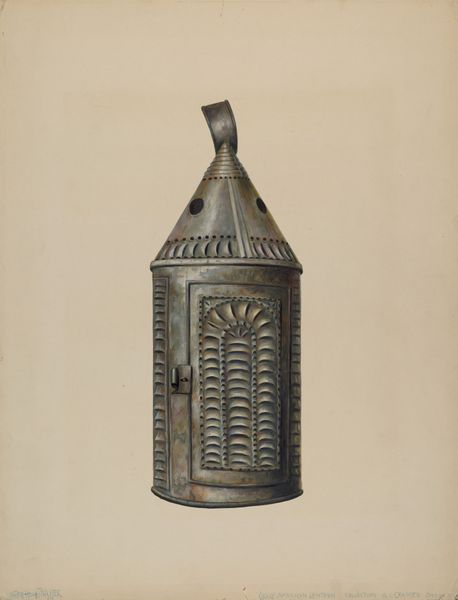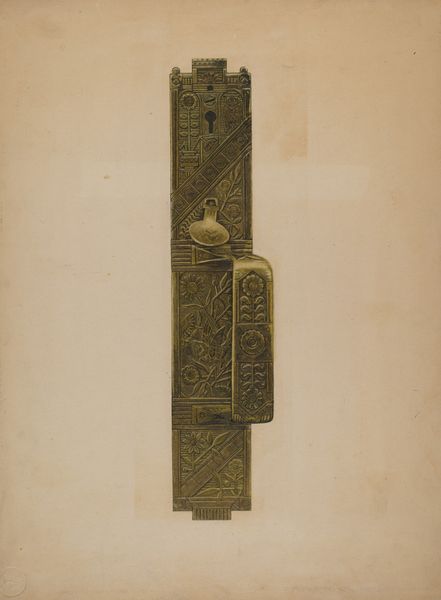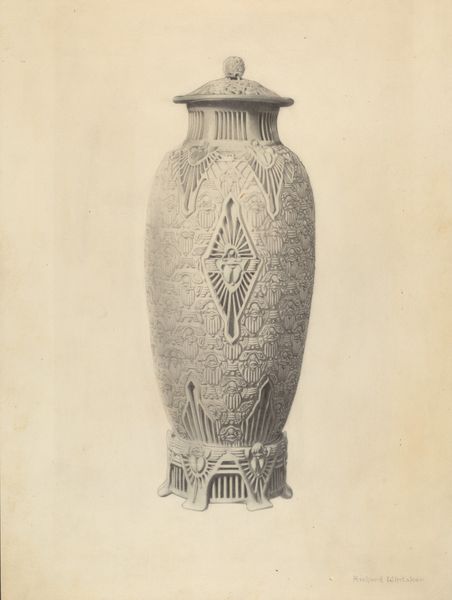
drawing, metal, pencil
#
drawing
#
metal
#
pencil
#
realism
Dimensions: overall: 29 x 22.7 cm (11 7/16 x 8 15/16 in.)
Copyright: National Gallery of Art: CC0 1.0
Curator: Welcome. Let’s explore Mildred Ford’s "Lantern," created around 1937 using pencil and metal. What strikes you initially? Editor: There's a certain somber quality, I think—almost starkness. It presents a lone object rendered in subtle greyscale, creating a quiet, contemplative mood. Curator: Agreed. Ford has focused meticulously on texture and form. Look at the details, how each perforation is painstakingly rendered to evoke light. The geometric pattern adds to the visual complexity and aesthetic appeal. Editor: While admiring the craftsmanship, I see something more. The lantern becomes symbolic. In times of darkness—political, economic, or social—the most marginalized need visibility. The care in illustrating it could be interpreted as advocating for unseen populations to be seen and accounted for. Curator: An intriguing lens through which to view it! What draws me in is the piece’s realism in portraying the metallic nature and the subtle light interplay, indicative of precision. Ford clearly understood volume, structure, and representation to elicit that sense of three-dimensionality. Editor: Beyond artistry, utilitarian objects used in marginalized spaces can speak volumes about societal hierarchies. Ford, in choosing this lantern, could be encouraging reflection upon forgotten places that remain lit, inhabited and persevering despite systemic inequities. Curator: A possibility, definitely. As a formal exercise, though, the work’s composition itself displays a brilliant command. Note how Ford directs the viewer's attention; a balanced but dynamic organization to provide overall visual harmony, really highlighting technical skills. Editor: Still, a lantern inherently relates to finding one's way and illuminating darkness, whether metaphorically or physically. The period context can reveal why Ford spotlighted it at a time rife with anxieties. Curator: Food for thought. On its own merit, Ford has truly created a wonderful image here. It is interesting how this close, detailed analysis reveals new ideas. Editor: Indeed! Objects are never just objects, they carry potential for us to interpret human presence, struggle, and determination through creative eyes.
Comments
No comments
Be the first to comment and join the conversation on the ultimate creative platform.

